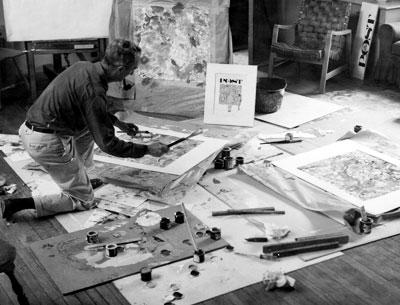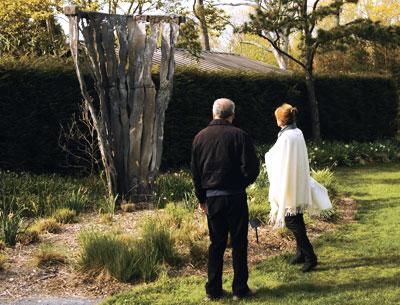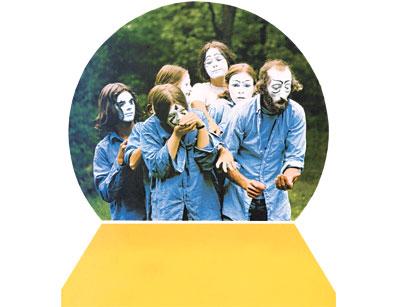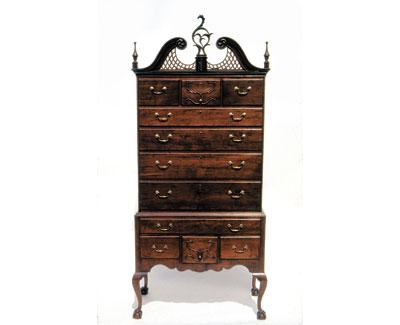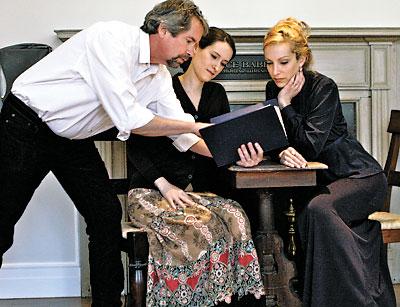Bonnie Rychlak: A Curator’s Work Is Never Done
Bonnie Rychlak: A Curator’s Work Is Never Done
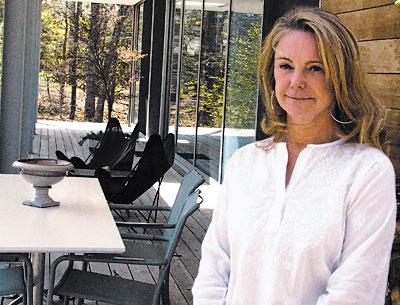
In January 2011, Bonnie Rychlak left the Isamu Noguchi Foundation and Garden Museum where she worked for 30 years to pursue her own artistic endeavors. It would prove to be a very short retirement.
Ms. Rychlak, who still takes on independent curatorial projects and is a visiting assistant professor at Pratt Institute, was also recruited by LongHouse Reserve to organize this year’s outdoor sculpture exhibition, which became “Diversities of Sculpture/Derivations from Nature.” The exhibit opens on Saturday in conjunction with the reserve’s season opening.
Last week, at her house in Springs, an open-plan modernist dwelling that she designed and built with her husband, Brian Gaman, over five years — and which owes something to the California architecture they both grew up with — she appeared to be relaxed and enjoying the art and curatorial projects that now claim her attention.
She started her association with Noguchi when the sculptor was alive, and worked as his assistant from 1980 until his death in 1988. “I gave that place my youth,” she said, with a hint of wistfulness but seemingly no regret.
In those days it was easy. She worked three days a week when Noguchi was alive and about four as the manager of the estate. But the creation of the foundation and the establishment of the Long Island City museum as a nonprofit meant money to raise, programs and staff to manage, and publications to organize. It became all consuming.
After working full time for many years, she decided it was time to step back and give herself a chance to express her own artistry. “The last few years were tough. . . . I needed a quiet contemplative time.” She described her studio as a mess, but it merely shows the evidence of an active, creative mind at work. There are new wax sculptures, drawings, and some of her older water-themed sculptures and photo narrative works with pebbled glass, which she continues to work on from her earlier career.
Her latest pieces were inspired by a residency at the American Academy in Rome in 2009. Struck by the figurative statuary fragments in evidence around practically every corner of the ancient city, she found contemporary relevance in their disconnectedness. She photographed these fragments from several sides. On the computer she layered them and then produced composite drawings, attempting to capture their three-dimensionality all at once. The resulting works are less Cubist than Expressionistic and became inspiration for works she carved in wax.
This was a breakthrough for Ms. Rychlak, whose earlier sculptures were somewhat mired in allusions to harder edged midcentury modern design. “I wanted to loosen up a bit, be more free-flowing.” She decided to use wax as a medium and to keep things interesting, she inserted metal objects into the blocks to create obstacles that she would have to navigate in realizing her vision for the piece. While she prefers the texture and malleability of beeswax, she found that paraffin’s own brittleness better expressed the brittleness of her source material.
Taking the operation of chance one step further in one of these objects, she mounted a wax piece on a stand and left it in a sunny spot in her studio over the summer while she was away. The resulting molten work, “Katsura,” resembles a Japanese wig on a stand, but also carries associations to ancient victory statues.
With a number of conflicting undercurrents in the various series she has worked on, it is no surprise that the artists she has gathered for LongHouse share no obvious visual commonality. Instead, she said in the catalogue essay that they share “a tenuous connection to a web of historical tenets.” Seen together, she said last week, “the oppositions and contradictions in their work accumulate,” something she finds as compelling as the similarities would be.
She was interested in midcareer artists, and Dore Ashton, who nominated her for LongHouse’s exhibition committee, said that the group wanted to show younger artists after a focus on well-established or regional artists. “If they happened to be East End artists, great, if not, then that was okay too.”
Coming up with a group that would look well together and outside was challenging. “When you show outdoors it’s always a surprise. You’re always fearful that what you see in the studio or gallery setting will look minuscule on a big lawn with a huge sky.”
Instead, she said, four of the six works she chose from artists including Mr. Gaman, Jene Highstein, Anne Chu, Ronald Bladen, Judith Shea, and Daniel Wiener look larger.
They will join the more familiar work of Sol LeWitt, Yoko Ono, Willem de Kooning, Toshiko Takaezu, Dale Chihuly, Lynda Benglis, Peter Voulkos, and Miquel Barcelo that are on permanent display.
Bladen, who died in 1988, was a pioneering Minimalist, who kept his expressiveness and the human form as inspiration. Mr. Highstein saw Bladen’s sculpture in a 1960s sculpture show and took its gestural qualities further into post-Minimalism. Mr. Gaman is also a descendant of this stylistic family with iron and steel globes that both imitate and somewhat challenge the stricter tenets of Minimalism. In her essay, Ms. Rychlak said there may be other shared allusions to metaphysics and Japanese gardens.
Mr. Wiener’s work is no less abstract, but more “free-flowing and organic,” longing for a grass base rather than the more hard-edged gravel on the site. “They’re very fanciful,” Ms. Rychlak said at her house. “No one quite knows what to make of them. . . . You feel like you’re getting a glimpse inside his brain.” She said that children will appreciate his “big alien mushroom forms.”
The female artists in the show work in a figurative tradition. Ms. Shea will show a bronze piece from a series inspired by Sept. 11, 2001, called “Idol,” which casts “a strange golden glow that changes with the light.” Ms. Chu’s “Maranao Man” was inspired by Southeast Asian guardian figures, but also reminds Ms. Rychlak of the Greek god Pan or the Green Man, a pagan deity of vegetation and growth appropriate to the surroundings at LongHouse.
Also at LongHouse
Another exhibition on view simultaneously with “Diversities of Sculpture/Derivations from Nature” in the LongHouse pavilion will be “Accumulations: NOW,” a group of craft works by Anni Albers, Olga de Amaral, Junichi Arai, Peter Collingwood, Helena Hernmark, Sheila Hicks, Chunghie Lee, Dorothy Liebes, Ed Rossbach, Kay Sekimachi, Ethel Stein, and Lenore Tawney. They will include furniture and objects in fiber and clay.
Both exhibitions premiere at LongHouse’s season opening on Saturday and will be on view through Oct. 6. Tickets to the opening of the gardens beginning at 2 and the reception from 5 to 7 p.m. are $10. Members get in free.
This season, LongHouse Reserve will also launch INstore, an online and retail museum store based on the grounds. It will feature unique items for house and garden from around the world, culled and cultivated by Jack Lenor Larsen. Sales will benefit the reserve.

